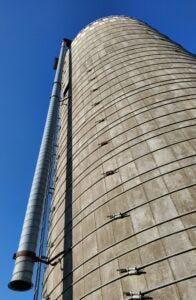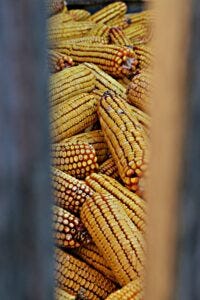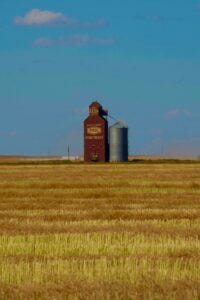The Big Three
by Sean Dengler

This essay is part 2, following Sean Dengler’s ‘The Final Straw.’ Read part 1 here.
The Big Three (Mosaic, Nutrien, CF) have made it impossible for farmers to use other fertilizers. Since the 1990s, due to the rapid consolidation, the Big Three have raised fertilizer prices, cut fertilizer output, and reduced the quality and selection of fertilizer products available in the United States. The annual price index for fertilizers was approximately six percent higher between 1980 and 1989 compared to 1976. Between 1995 and 1999, the index rose to an average of 72.8% above 1976 levels even as natural gas declined to historic lows. Between 2007 and 2020, the index has hovered around double and even triple what it was in 1999. Using the Green Markets Weekly North America Fertilizer Price Index, which benchmarks U.S. prices of nitrogen, potassium, and phosphate fertilizers by annual demand, fertilizer prices increased to 500 to 600% of 2002 levels in the 2020s. For comparison, in 2021 and 2022, the real cost of energy, raw materials, and other inputs to produce agricultural chemicals, which includes fertilizers and pesticides, reached more than 40% below 1990 levels.
Business has been good for these companies or for those holding their stock. Between 2010 and 2024, Mosaic and Nutrien had an annual profit margin of over 30% while CF was 42.5%. Compare this with the fact that the average company in the Agricultural Inputs sector of the S&P 500, as of March 2024, had a margin of 13 to 16%. Investing their profits, if they have profits, into these companies’ stocks might be a clever idea for farmers.
Due to the consolidation, there has been a lack of investment in this industry. Based on a 2011 USDA report, improvements in fertilizer formulations and application methods could have significant economic benefits to farmers. A process exists by the National Energy Technology Laboratory to make ammonia production using renewable energy. Farmers could make their own green ammonia instead of the energy-intensive and greenhouse gas-producing Haber-Bosch process which has been around since 1913. These large producers are not inclined to change their processes due to their centralized production. NETL has few market newcomers with alternative business models to partner with. There are no incentives for the current producers to change, and I assume that it would be hard for a new company to compete in this market with this monopoly power, without a lot of capital.
So this wonderful money-saving and climate-helping technology is not utilized.
Back to what was happening on the ground to farmers. These highly consolidated industries knew they could claim “supply chain issues” as a reason to raise prices. Fortunately, corn and soybean prices stayed high in 2022, thanks to Russia invading Ukraine. Farmer profit margins shrunk but profit still existed.
Then the calendar turned to 2023. Corn and soybean prices hung on by a thread until corn planting, due to a weather scare. A wet forecast had the market scared that corn and soybeans might not be planted in ideal conditions. This was only a scare. As the forecast was only a forecast and the weather turned to favorable planting conditions, corn and soybean prices fell off a cliff. They have stayed in the ravine since. Sometimes they jumped off another smaller cliff.
For my fertilizer process, I was taught by my dad. He is old school. This might not be the best way, but it was the way I was taught. We bought fertilizer for 2024 in August of 2023. P and K are spread in the fall. N can be done in the spring or fall in strips, depending on preference.
In 2023, I thought fertilizer prices would come down like corn and soybean prices. I was wise enough to assume it would not fall off a cliff, but I figured the prices might come down slowly. This is what happened. According to my numbers, the corn price dropped almost 21% between January and August in 2023 and soybeans dropped six percent. In this same period, MAP (monoammonium phosphate) dropped 15% and potash (potassium) dropped 24% according to the USDA. Not bad.
When I looked at fertilizer prices more recently, corn prices have declined by 44% and soybean prices by almost 33% from January 2023 to August 2024. Compared to anhydrous ammonia (N) which dropped 41%, MAP dropped nine percent, and potash dropped 25%. Nothing has changed considerably outside of these markets during this time. Same highly consolidated industry, different year, taking farmers’ wealth all to the bank.
What frustrates me most is that these consolidated market players extort me to make their investors happy while I take on all the risk. They do not care for me, small towns, or other farmers. They want all the money to deliver substandard products.
This is wrong. If I delivered inferior quality corn to the elevator, I would get rejected. But these companies deliver unreasonable prices and worse products.
When this started happening, I realized that with fertilizer being my highest expense outside of land, it was time to be finished. I could not control this cost. I was at the mercy of these uncompetitive, market-controlling companies. It is bad business to be in a line of work where my largest cost is being forced to be a price-taker. I was not going to let my wealth be taken from me, as has been happening to rural Iowa for far too long. I was done, and I am now fighting against these uncompetitive, wealth-gobbling companies.
Sean Dengler is a writer, coach, and “retired” farmer, who grew up on a farm between Traer and Dysart. While he now lives in Urbandale, you can read him in the North Tama Telegraph and on Substack. You can reach him at sean.h.dengler@gmail.com.
Browse through the Iowa Writers Collaborative posts. The Sunday Round-Up and the Flipside are both great reads. Find someone you like and share, comments, and support their work.






Thank you for making the math and the issues so clear. Fight on, right on, write on!